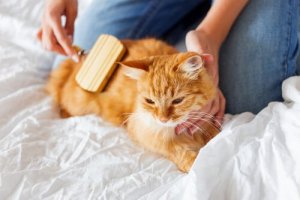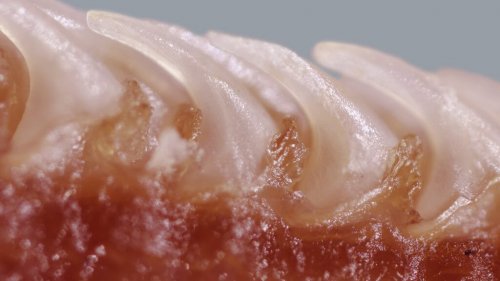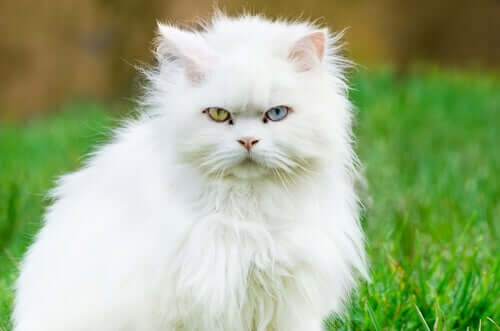Cat Hairballs - How to Deal with Them

Cat hairballs happen because the animals are continuously licking themselves. Hair accumulates on their tongue and ends up in their throat and then in their stomach. This hair then forms the groups that we know as hairballs.
The tongue of a cat is sort of like velcro, covered in little spines called “papillae” that look like tiny hooks. These papillae are made of keratin, just like human fingernails. These allow cats to eat, drink and clean themselves easily. However, at the time of cleaning, the hairs get trapped in them and the only way to eliminate them is by swallowing them.

Usually, hairballs are not a problem as cats have been eliminating them through their feces or by vomiting them for thousands of years. However, it does become an issue when they fail to do so.
How to identify hairballs in a cat
When a cat cannot expel the dreaded hairballs for some reason, they’ll have visible symptoms that you can easily identify as caused by the accumulation of hair.
For instance, they may be vomiting more than usual, lose weight, or have a lack of appetite. If you see any or more of these symptoms, take your cat to the veterinarian as soon as possible. When they can’t eliminate these hairballs on their own, then surgery may be necessary.
If the balls happen to be in the large intestine, then your cat will show symptoms of constipation. Induce them to purge the balls by giving them catnip; this is the most effective traditional method to help them.
Other laxatives may also be effective in enabling passage of a stubborn hairball. However, don’t give your cat a laxative without the approval and supervision of your veterinarian. The same goes for the use of commercial diets that claim to be effective in preventing or relieving such an obstruction.
How to prevent them

- Animal feed. A good diet helps with most health problems. So, feed them good quality products specifically designed for felines as they usually contain malt and fiber, two components that help them eliminate hairballs.
- Malt paste. Include it in your cat’s diet as it’ll benefit their intestinal transit and favor the expulsion of hairballs when they have them. If they don’t have any, then it’ll prevent them from forming.
- Keep plants inside the house. Cats that live in houses where there aren’t any plants are more likely to have hairballs. Plants such as barley and other grasses help cats purge and prevent hair from accumulating in their stomach.
- Brushing. Another way to prevent cat hairballs is to brush their hair every day. The reason why hair accumulates in your cat’s stomach is that they ingest it as they lick themselves. If all that dead hair disappears with brushing, then there’ll be none to swallow. This is of paramount importance during winter if there are heaters in your house, and in summer due to high temperatures. This is because cats lose more hair at higher temperatures.
It’s vital to observe your cat and the discomfort they may show. And above all, learn how to help them. At least now you know how to deal with the dreaded hairballs.
https://misanimales.com/tratar-las-bolas-pelo-gatos/
Cat hairballs happen because the animals are continuously licking themselves. Hair accumulates on their tongue and ends up in their throat and then in their stomach. This hair then forms the groups that we know as hairballs.
The tongue of a cat is sort of like velcro, covered in little spines called “papillae” that look like tiny hooks. These papillae are made of keratin, just like human fingernails. These allow cats to eat, drink and clean themselves easily. However, at the time of cleaning, the hairs get trapped in them and the only way to eliminate them is by swallowing them.

Usually, hairballs are not a problem as cats have been eliminating them through their feces or by vomiting them for thousands of years. However, it does become an issue when they fail to do so.
How to identify hairballs in a cat
When a cat cannot expel the dreaded hairballs for some reason, they’ll have visible symptoms that you can easily identify as caused by the accumulation of hair.
For instance, they may be vomiting more than usual, lose weight, or have a lack of appetite. If you see any or more of these symptoms, take your cat to the veterinarian as soon as possible. When they can’t eliminate these hairballs on their own, then surgery may be necessary.
If the balls happen to be in the large intestine, then your cat will show symptoms of constipation. Induce them to purge the balls by giving them catnip; this is the most effective traditional method to help them.
Other laxatives may also be effective in enabling passage of a stubborn hairball. However, don’t give your cat a laxative without the approval and supervision of your veterinarian. The same goes for the use of commercial diets that claim to be effective in preventing or relieving such an obstruction.
How to prevent them

- Animal feed. A good diet helps with most health problems. So, feed them good quality products specifically designed for felines as they usually contain malt and fiber, two components that help them eliminate hairballs.
- Malt paste. Include it in your cat’s diet as it’ll benefit their intestinal transit and favor the expulsion of hairballs when they have them. If they don’t have any, then it’ll prevent them from forming.
- Keep plants inside the house. Cats that live in houses where there aren’t any plants are more likely to have hairballs. Plants such as barley and other grasses help cats purge and prevent hair from accumulating in their stomach.
- Brushing. Another way to prevent cat hairballs is to brush their hair every day. The reason why hair accumulates in your cat’s stomach is that they ingest it as they lick themselves. If all that dead hair disappears with brushing, then there’ll be none to swallow. This is of paramount importance during winter if there are heaters in your house, and in summer due to high temperatures. This is because cats lose more hair at higher temperatures.
It’s vital to observe your cat and the discomfort they may show. And above all, learn how to help them. At least now you know how to deal with the dreaded hairballs.
https://misanimales.com/tratar-las-bolas-pelo-gatos/
This text is provided for informational purposes only and does not replace consultation with a professional. If in doubt, consult your specialist.








